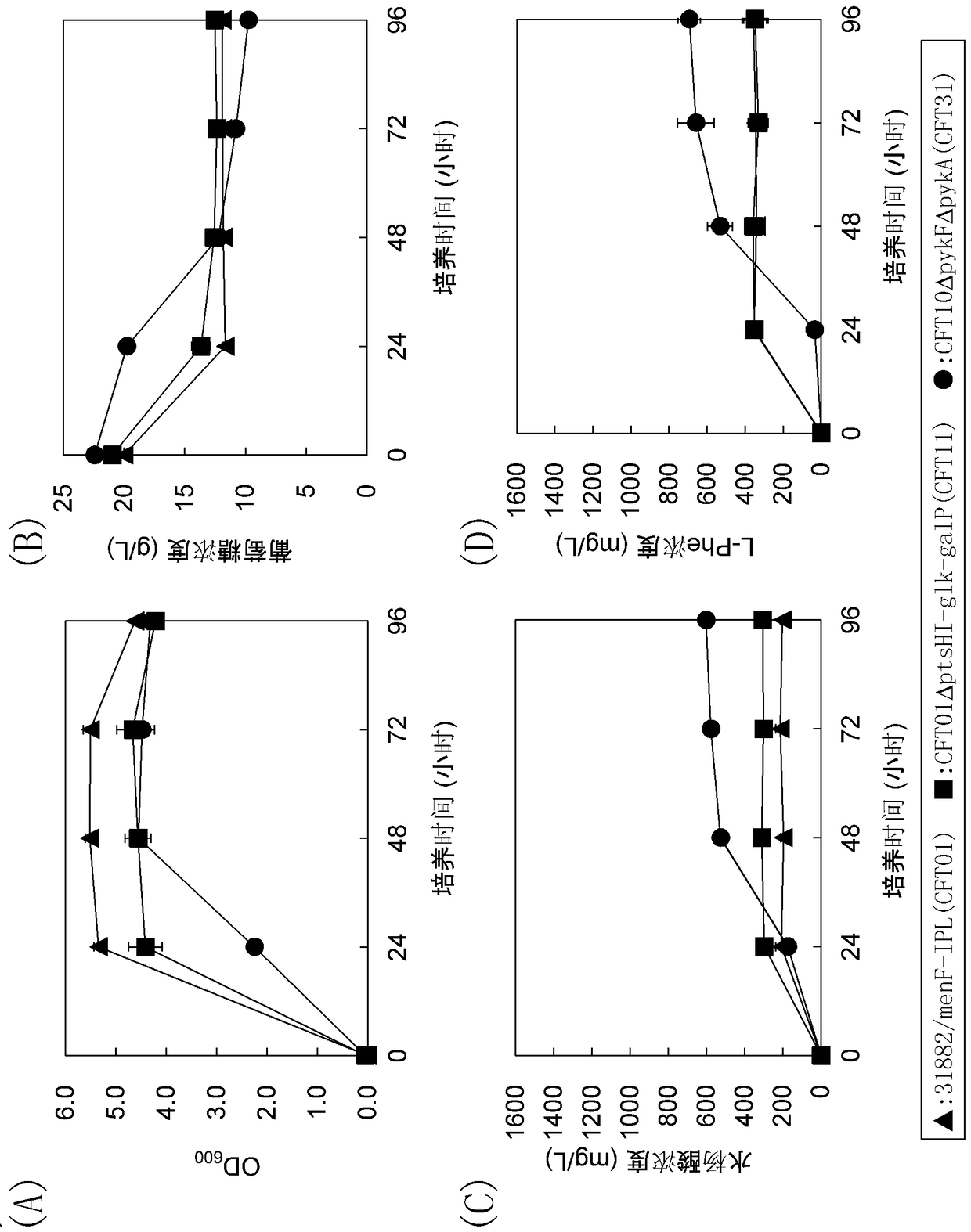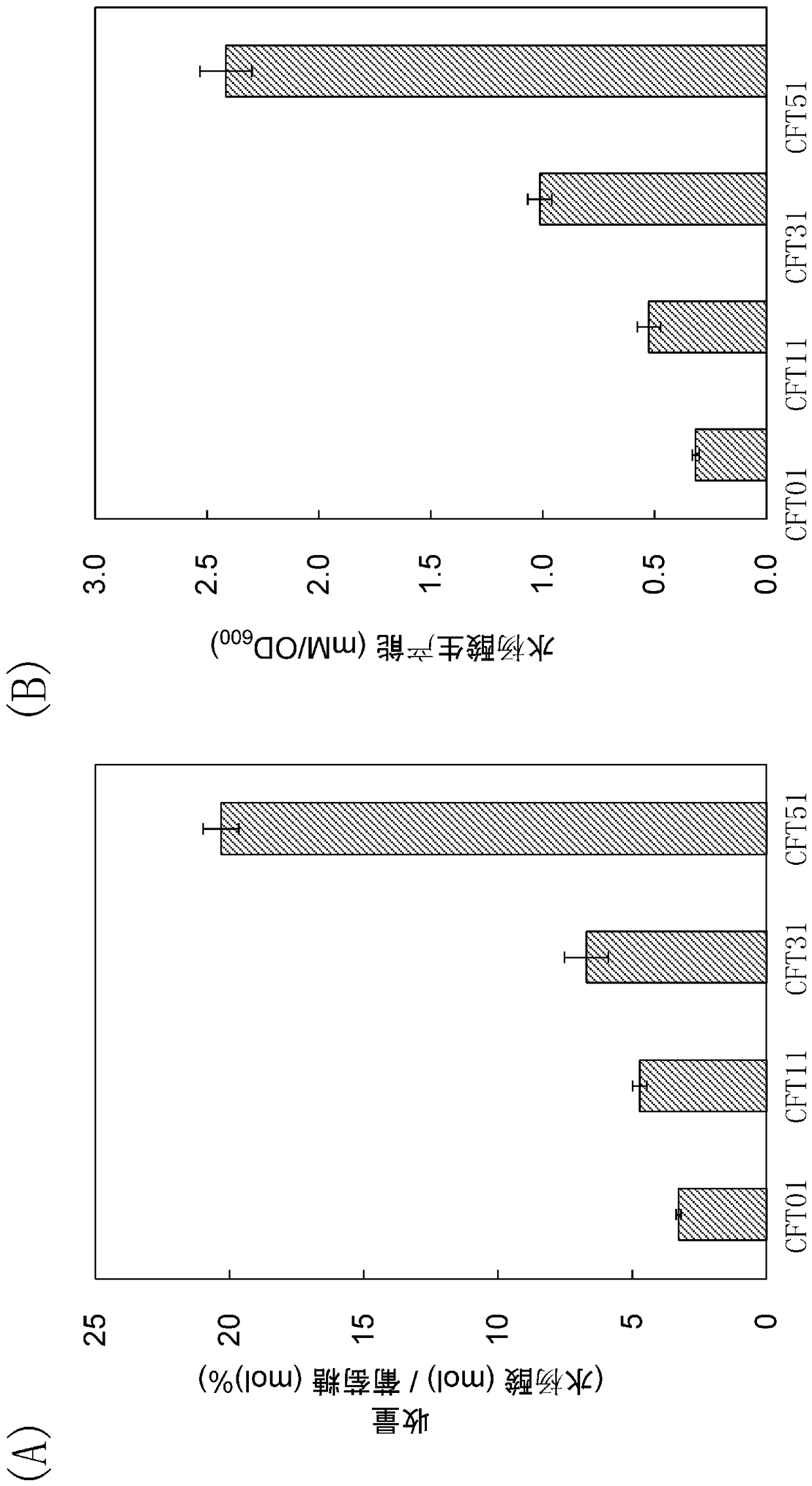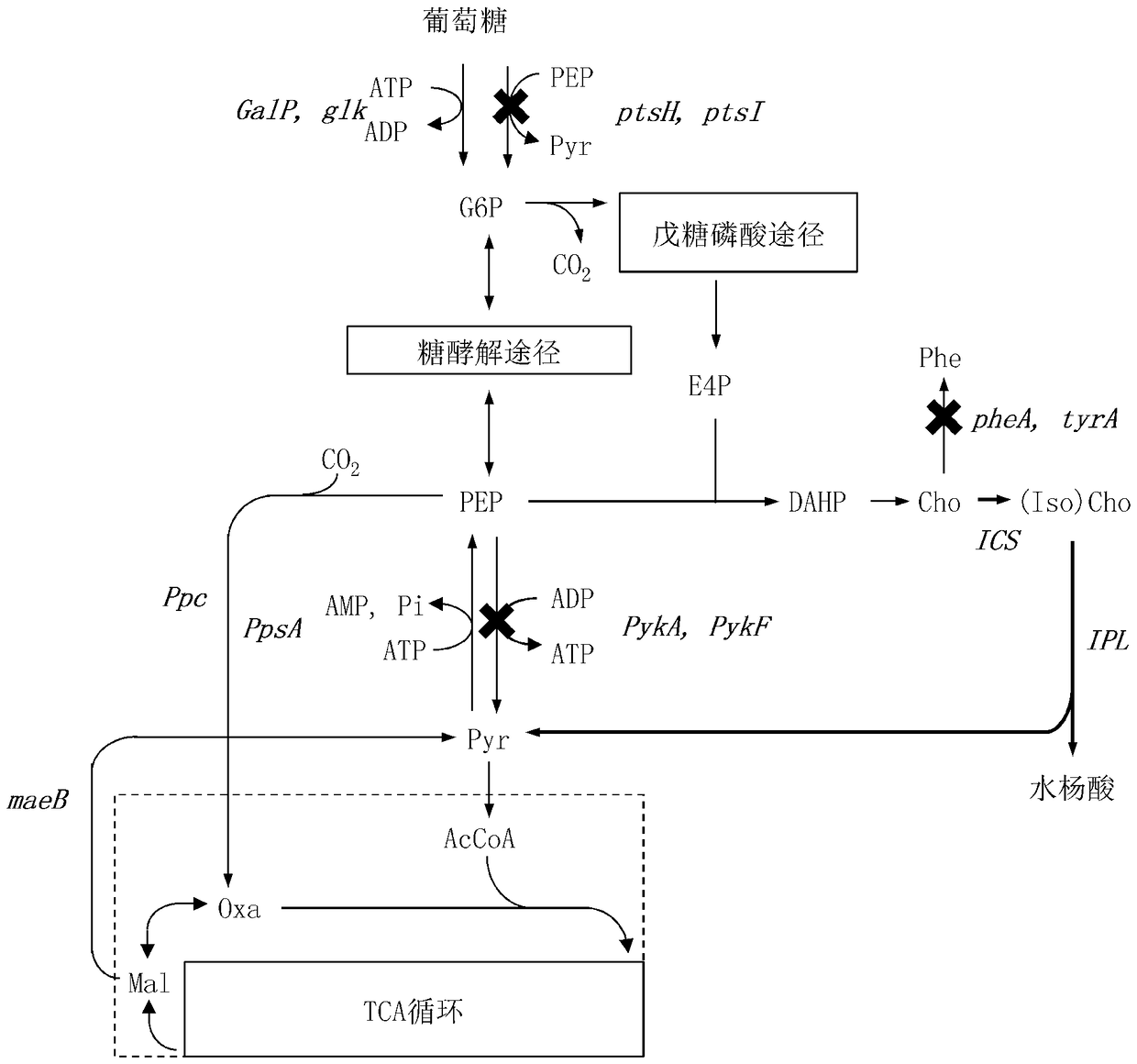Method for producing aromatic compound and derivative thereof
A technology for aromatic compounds and manufacturing methods, applied in microorganism-based methods, biochemical equipment and methods, microorganisms, etc., can solve the problems of low productivity of salicylic acid, undeveloped biosynthesis methods, etc., and achieve increased utilization. Effect
- Summary
- Abstract
- Description
- Claims
- Application Information
AI Technical Summary
Problems solved by technology
Method used
Image
Examples
Embodiment 1
[0186] [Example 1] Production of gene-deficient cell lines
[0187] Transformation of E. coli was attempted in order to produce chorismate derivatives. As a mother strain, an L-phenylalanine excess-producing strain (ATCC31882) of Escherichia coli was used.
[0188] The gene fragments encoding GalP and Glk use the genomic DNA of Escherichia coli MG1655 (ATCC700926) as a template, by using glk_NI_f (SEQ ID NO: 23) and glk_NI_r (SEQ ID NO: 24), and galP_NI_f (SEQ ID NO: 25) and PCR with galP_NI_r (SEQ ID NO: 26) as a primer was respectively amplified. The amplified fragments were inserted in tandem into pCFTdeltain ( figure 2 ) HindIII and BamHI sites. The resulting plasmid was named pCFTdeltain-GG.
[0189] Gene deletion was performed using Quick & Easy E. coli Gene Deletion Kit (Funakoshi, Tokyo, Japan) according to the protocol in the instruction manual.
[0190] About destroying ptsHI and importing PA1lacO-1 - A fragment of Glk-GalP obtained by PCR amplification using d...
Embodiment 2
[0195] [Example 2] Preparation of salicylic acid synthetic cell line
[0196] Using the ATCC31882 strain, genes encoding ICS and IPL were introduced in order to enhance its salicylic acid synthesis ability. In this example, menF, entC, and pchA were used as the gene encoding ICS, and pchB was used as the gene encoding IPL.
[0197] The pchA and pchB gene fragments derived from P. aeruginosa were commercially available (SEQ ID NO: 37 and 38, Invitrogen), and the codon usage of pchA and pchB was optimized for Escherichia coli.
[0198] Regarding the gene fragment encoding pchB, the codon-optimized synthetic gene fragment was used as a template and amplified by PCR using pchB_f (SEQ ID NO: 1) and pchB_r (SEQ ID NO: 2) as primers. The amplified fragment was inserted into the HindIII site of pZE12MCS (manufactured by Expressys). The resulting plasmid was named pZE12I.
[0199] Regarding the gene fragments encoding menF and entC, using the genomic DNA of Escherichia coli MG1655 a...
Embodiment 3
[0205] [Example 3] Introduction of salicylic acid biosynthetic pathway
[0206] Instead of the ATCC31882 strain, the plasmid prepared in Example 2 was introduced into the mutant strain prepared in Example 1, and the ability to produce salicylic acid was studied.
[0207] pZE12mI was introduced into the CFT1 strain which has genes encoding Glk and GalP and is deficient in ptsHI, and a strain capable of expressing menF and pchB was produced. In this specification, it is described as CFT11 strain.
[0208] The CFT11 strain was cultured and evaluated in the M9 minimal medium containing glucose as the sole carbon source in the same manner as the CFT01 strain. The culture characteristics of the CFT11 strain are shown in image 3 . The production of salicylic acid and L-phenylalanine reached 311 and 358 mg / L, respectively. The productivity of salicylic acid increased 1.5-fold compared with the CFT01 strain, but the productivity of L-phenylalanine was almost the same.
[0209] Ne...
PUM
 Login to view more
Login to view more Abstract
Description
Claims
Application Information
 Login to view more
Login to view more - R&D Engineer
- R&D Manager
- IP Professional
- Industry Leading Data Capabilities
- Powerful AI technology
- Patent DNA Extraction
Browse by: Latest US Patents, China's latest patents, Technical Efficacy Thesaurus, Application Domain, Technology Topic.
© 2024 PatSnap. All rights reserved.Legal|Privacy policy|Modern Slavery Act Transparency Statement|Sitemap



